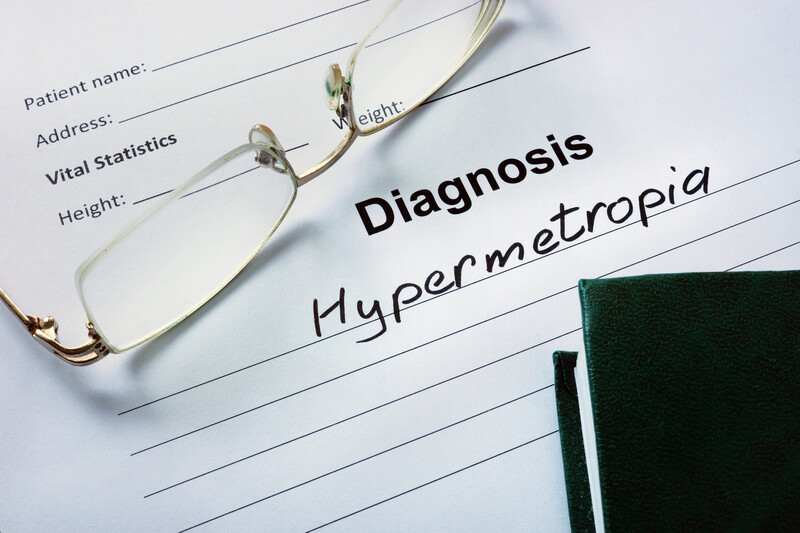People with normal vision have a clear and focused view of things. But if you are suffering from long sight (Hypermetropia), your brain is receiving blurry images which in turn can lead to headaches, fatigue, and more. Luckily there are treatments for this condition that can help you regain optimal focus on the world around you and improve your quality of life.
What is Hypermetropia?

Hypermetropia, also known as long sight, is a condition where the eye has difficulty focusing on objects that are close up. This is because the eyeball is too short or the cornea is not curved enough. The brain perceives images out of focus and as a result, the image projected onto the retina is blurry.
What Are the Symptoms of Hypermetropia?
The most common symptoms of hypermetropia include:
- Headaches: These can be a result of the brain trying to compensate for the blurry images.
- Tired eyes: The strain from trying to focus on blurry images can cause your eyes to feel tired and strained.
- Blurred vision: This is the most common symptom of hypermetropia and is caused by the images being out of focus.
- Squinting: When you are trying to see clearly, you may squint in an attempt to improve focus.
- Vision problems in low light: Hypermetropia can make it difficult to see in low light conditions.
What Causes Hypermetropia?
There are a number of factors that can contribute to the development of hypermetropia. A short eyeball is the most common cause of hypermetropia. This can be due to genetics or an injury to the eye. A less common cause is when the cornea (the clear front part of the eye) is not curved enough. This can be due to a number of factors including age, diabetes, and excessive use of contact lenses.
Age is a common factor that can contribute to the development of hypermetropia. As people age, the eye muscles weaken and the eyeball becomes shorter. This can cause the person to become more susceptible to developing the condition.
There is also a strong link between diabetes and hypermetropia. Diabetes can cause the cornea to become less curved, leading to an increase in the number of cases of hypermetropia.
Finally, while contact lenses are a popular choice for people who want to improve their vision, there is a risk of developing hypermetropia if they are overused. When contact lenses are worn for too long or when they are not fitted correctly, the cornea can become stretched and less curved. This can lead to an increase in the number of cases of hypermetropia.
How is Hypermetropia Diagnosed?
Hypermetropia is diagnosed through a comprehensive eye exam. This will include a series of tests that will help to determine the cause and extent of your hypermetropia. These tests may include:
- A refraction test: This is where the doctor will put different lenses in front of your eyes to see which one gives you the clearest vision.
- A slit-lamp examination: This uses a powerful light and magnifying lens to allow the doctor to see the structures of your eye in detail.
- A fundus examination: This is where the back of your eye is examined to check for any signs of damage or disease.
How is Hypermetropia Treated?
There are a number of treatments available for hypermetropia. The most common treatment is to wear glasses or contact lenses that have a stronger prescription. This will help to bring the images into focus.
If you are unable to wear glasses or contacts, there are other treatments available, such as surgery or laser treatment. There are a number of different surgeries available, depending on the cause of your hypermetropia.
One common surgery is called LASIK (laser-assisted in situ keratomileuses). This surgery involves the use of a laser to reshape the cornea. Laser treatment is another option for people who are unable to wear glasses or contact lenses. This treatment uses a laser to correct the shape of the cornea.
Both surgery and laser treatment are effective treatments for hypermetropia, but they do come with some risks. It is important to discuss the risks and benefits of these treatments with your doctor before making a decision.
How To Prevent Hypermetropia
There are a number of ways that you can reduce your risk of developing hypermetropia. The most important way to prevent the condition is to have regular eye exams. This will allow your doctor to diagnose hypermetropia early and start treatment.
You can also reduce your risk of developing the condition by:
- Wearing glasses or contact lenses: This will help to bring the images into focus.
- Reducing your screen time: Too much screen time can cause your eyes to become strained and tired. Take a break from screens every 20 minutes or so to give your eyes a rest.
- Exercising regularly: Exercise is good for overall health and can help to keep your eyes healthy.
- Eating a healthy diet: A balanced diet is essential for overall health and this includes the health of your eyes. Eat plenty of fruits and vegetables and make sure you are getting enough omega-3 fatty acids.
Hypermetropia is a condition that occurs when the images seen by the eye are out of focus. This can lead to a number of symptoms, such as headaches, tired eyes, and blurred vision. The most common treatment for hypermetropia is to wear glasses or contact lenses with a stronger prescription. If surgery or laser treatment is not an option, there are a number of other treatments available. It is important to discuss the risks and benefits of these treatments with your doctor before making a decision.








Add Comment